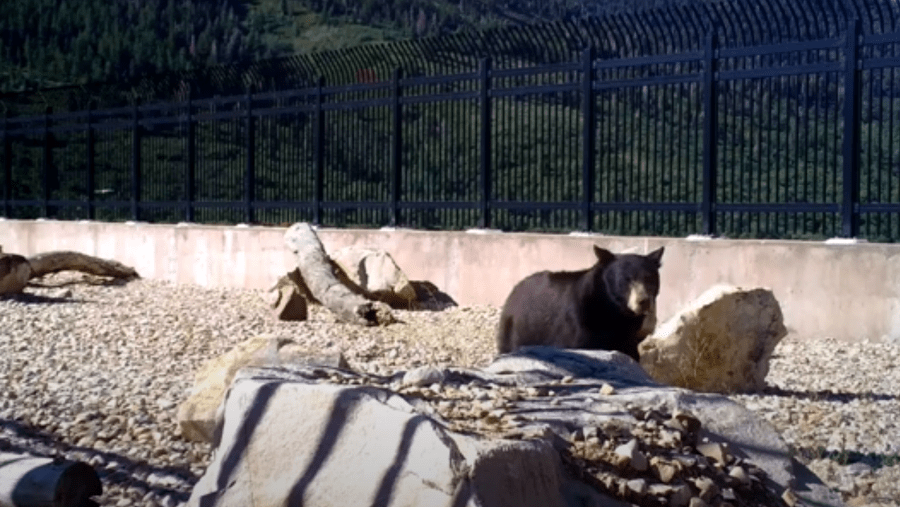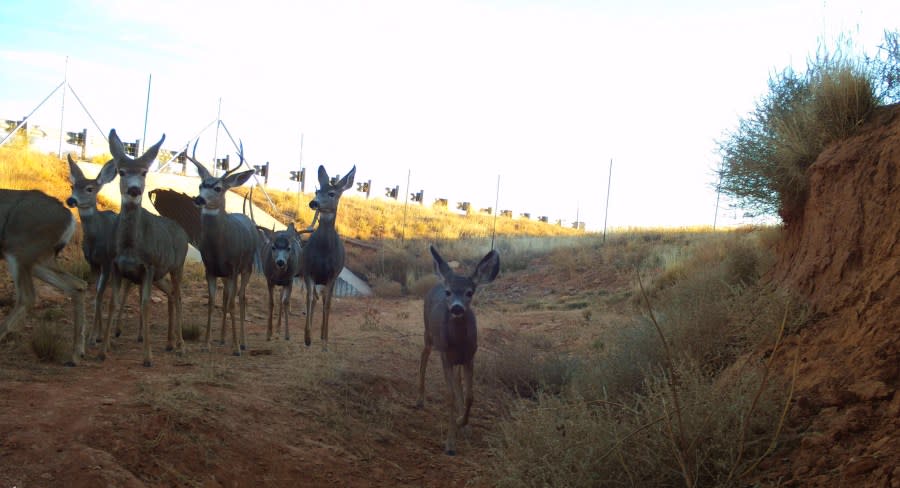Where Utah plans to build more wildlife crossings
SALT LAKE CITY (ABC4) — Over the weekend, a vehicle driving on a northern Utah highway slammed into a moose, which shattered the vehicle’s windshield before the animal bounced off and into the path of another on-coming car.
This double collision, which only left one driver with minor injuries, happened Sunday night on the Old Highway near Green Mountain in Weber Canyon. The road runs parallel to I-84, and it’s near an area state officials describe as a hotspot for wildlife vehicle collisions.
It’s one place where Utah is aiming to build another multi-million dollar wildlife crossing project.
Underpasses and overpasses
Matt Howard, UDOT’s natural resource manager, told ABC4 on Tuesday that there are currently about 50 wildlife crossings in the state, mostly targeting mule deer as they are the species most involved in vehicle collisions. However, some crossings target species such as elk and desert tortoise.
The majority of Utah’s wildlife crossings are underpasses, which funnel wildlife beneath a road using a tunnel or other structures.
“In areas where we put in crossings, we do see a significant reduction [in collisions with animals],” Howard said, adding that UDOT is continually working to improve the areas around these crossings.
Utah only has two wildlife overpasses, where there is a bridge over a road that’s built specifically for animals, especially larger ones such as moose and elk.
One of these expensive structures was built near Beaver in the 1970s. The other was built on Parleys Summit in 2018. The price tag for that project was about $5 million.

According to Howard, the overpass on Parleys Summit was designed with moose in mind, following a period of years where there were nine moose collisions in the area.
“[Moose] are generally not a targeted species, but in places where we do have moose, they can quickly become our highest priority in terms of collisions, just because of how catastrophic an accident with a moose can be,” Howard said.
Nicole Nielson, impact analysis coordinator for the Utah Division of Wildlife Resources, said that trail cameras on these two overpasses show that animals from moose to black bears routinely use them.
“With our trailcam monitoring, we’ve seen thousands of animals use these annually, so they are quite successful” she said.
Roughly 80% of animals seen approaching the overpasses cross them, Nielsen said, adding that the crossing numbers tend to improve the longer the structure has been in place and animals are familiar with it.
Echo Junction
Currently, Utah is working to get federal funding for a wildlife crossing (or crossings) near Echo Junction, at the intersection of I-80 and I-84 near Echo Reservoir. This area is roughly 25 miles from Sunday’s moose collision in Weber Canyon.
“We’ve found that we have migration routes [for mule deer] in that I-80, I-84 area … and there’s also a railroad through there, so there’s just a lot going on,” Nielson said. “We see a lot of wildlife-vehicle collisions in that area.”
The vision for the Echo Junction project is part of a $20 million allocation that Utah lawmakers approved last year to target federal funds for wildlife crossings across the state.
Already, Utah has won a $5.5 million grant to build three wildlife underpasses on U.S. Highway 89 near Kanab. According to wildlife officials, there have been 72 wildlife collisions along that stretch of road in the last five years, as a major mule deer herd migrates across it.

According to Howard, three more rounds of federal grants are coming up, and Utah is hoping that the Echo Junction project is among those awarded funding. UDOT is also targeting other areas for wildlife crossings, but the Echo Junction location was specifically prioritized by the Utah Legislature.
The plan for the Echo Junction wildlife crossing project is currently in the development stage, and Nielson said that state officials will collaborate with nonprofit groups to find solutions and figure out the best way forward.
“To me, it’s a real success when we can reduce crashes on the roadway and … keep healthy wildlife populations,” she said. “It’s just a win-win for all of us.”
For the latest news, weather, sports, and streaming video, head to ABC4 Utah.

